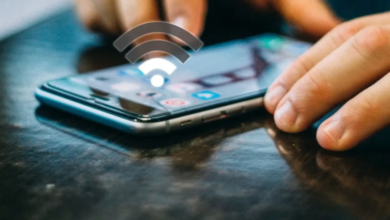Photoshop Image Detector: Unmasking Altered Realities

The Digital Age of Image Manipulation coming up
In the era of the visual predominance in online communication, the authenticity of images has emerged as an increasing issue. As image manipulation tools, such as Adobe Photoshop, continue to grow more advanced, manipulated photos are rampant on social media, news sites, and online shopping portals. Photo editing can be used to distort reality easily whether it is done with good intentions of artistic expression or with ill motives. This is what AI Photoshop detectors come in to play.
AI Photoshop Detector, what is it?
An AI Photoshop detector is a device or a computer program that functionalizes artificial intelligence and machine learning algorithms to identify whether an image is digitally manipulated or not. Such tools analyze photograph metadata, inconsistencies in the individual pixels, and structural alterations in photos to indicate possible manipulations.
With the increase in the seamlessness of image editing, AI-powered systems play a key role in assisting professionals and regular users to validate the authenticity of images. Convolutional neural networks (CNNs) and forensic approaches are frequently employed by the photoshop image detector to identify the difference between the original and manipulated regions of a photograph.
The Importance of Photoshop Detection.
Combating Misinformation
Images that have been photoshopped are popular in sharing false information or manipulating the masses. According to a 2023 report by the Pew Research Center, more than 65 percent of Americans at least weekly came across digitally manipulated images on social media. One of the ways to stop manipulated news and propaganda is Photoshop detection.
Guardring Consumer Confidence.
Internet customers use pictures to make purchasing decisions. Photo editing detector tools assist e-commerce websites to check whether a product photo has been manipulated to avoid deceiving a consumer.
Legal and Ethical Implication
In law, photo editing might tamper with evidence and change the results of judicial hearings. Digital forensics can be facilitated by using Photoshop image detectors, which prove image integrity.
The AI Photoshop Detectors explained how AI works
1. Metadata Analysis
All digital photos have metadata, such as what device was used, when it was taken, and editing history. This data is used by detectors to spot inconsistencies.
2. Pixel-Level Analysis
The AI systems examine the lighting and shadows and pixel anomalies. This enables the AI photoshop detector to identify the regions that have indications of cloning, splicing, or other digital manipulations.
3. Deep Learning Methods
State-of-the-art models use deep learning to detect subtle changes. Millions of images training enable the system to differentiate between the photos taken naturally and the ones edited using software.
U.S. Real-World Applications.
Newsrooms and Journalism
U.S. media are greatly advancing the use of AI applications to confirm visual content prior to publication. Example: at Reuters and AP, there are content verification teams, which resort to the use of photoshop detection tools.
SMM
Facebook and Twitter are investing in AI to identify and curb the circulation of fake images. These features assist in tagging or muting modified content that the photo editing detector identifies.
Law Enforcement
The Digital Evidence Section of FBI has been applying advanced imaging technology in the investigation of crimes to authenticate presented evidence in the form of images by the use of photoshop image detectors.
Read Also: Exploring the Impact of Metaverse on Dental Marketing
Limitations and Challenges
These tools are not flawless despite their developments. They can have problems with:
Location of edits in high compressed images.
Drawing the line between artistic and manipulative edits
Detection of AI-based deepfakes resembling photographic artefacts
These drawbacks show that it is vital to integrate human knowledge with AI to achieve optimal outcomes.
Photoshop Detection in the Future
With the increasing misinformation and the realistic AI-generated content, the need to have reliable AI deepfake detection will continue to rise. Explainable AI (XAI) innovations could make such tools more transparent and, thus, more acceptable in the court and in the media.
The U.S. market of AI image forensics is expected to grow to 2.1 billion dollars by 2026, as demand in media, law enforcement, and corporate domains rises.
Conclusion
As the digital image deluge hits a world, utilities such as the AI Photoshop detector become essential to the maintenance of truth and transparency. Whether in journalism or law enforcement, the capacity to identify image manipulation is of primary importance to ensure the trust in visual media. With the expected evolution of the technology, all we can do is to remain updated and keep our eyes wide open to avoid being victims of digital deceit.




